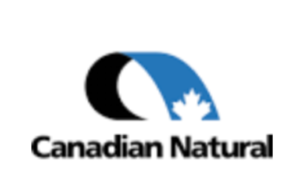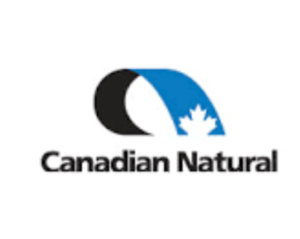Canadian Natural Resources Ltd on Tuesday joined its rivals in forecasting higher capital expenditure and production in 2022, as it bets on a sustained recovery of oil and gas prices from the pandemic-driven historic lows.
Canadian Natural Resources Limited Permit Downloads
Canadian Natural Resources Drilling Permits Last 12 Months
Canadian Natural Resources Facility Permits
Canadian producers are raising their full-year expenditures as they benefit from rallying crude and gas prices. However, companies are opting to spend on buybacks, dividends and squeezing more barrels out of existing assets instead of taking on large expansion projects.
Last month, Canadian Natural’s rivals, Suncor Energy Inc, Cenovus Energy Inc and Imperial Oil Ltd , also raised their capital expenditure and output expectations for 2022.
Canadian Natural, the country’s biggest oil and natural gas producer, expects to spend $4.35 billion in 2022, higher than its 2021 estimate of $3.48 billion.
The Calgary, Alberta-based producer also said it expects total production to be between 1.27 million and 1.32 million barrels of oil equivalent per day (boepd) this year, compared with the 1.19 million to 1.26 million boepd it had estimated for 2021.
Canadian Natural President Tim McKay told a conference call that the company will focus on a balanced approach “where we have production growth, but at the same time are increasing shareholder returns and driving debt down further.”
It expects to boost production by roughly 63,000 barrels per day by 2025 through incremental growth existing projects and reducing maintenance turnarounds.
Canadian Natural shares were last up 0.7 per cent on the Toronto Stock Exchange at $60.34. Analysts said the budget was largely in line with expectations.
News you might find interesting
About Canadian Natural Resources
Canadian Natural Resources has exploited Canada’s resources to become one of the country’s largest natural gas producers. The company has large oil holdings (light, medium, and heavy crude assets) in British Columbia and Alberta, as well as in Saskatchewan. It also has holdings in the North Sea and offshore West Africa. In addition, the company has major interests in oil sands production in Canada. In 2010 Canadian Natural Resources reported proved reserves of 3.8 billion barrels of oil, bitumen, and natural gas liquids, (including 1.9 billion barrels of synthetic crude oil), and 4.3 trillion cu. ft. of natural gas, and produced an average of 632,000 barrels of oil equivalent per day.
The Deep Basin position has ~1.8MM net acres of Spirit River Formation rights which is the dominant producing liquids rich gas Formation. Our Deep Basin assets from Edson to Wapiti have a significant horizontal well exploration drilling inventory of Spirit River liquids rich natural gas drills as well as Dunvegan Formation light oil drills. We have extensive and underutilized infrastructure which provides us with a “Drill to fill” strategic opportunity as well as low operating costs.
At our Hays gas plant in Taber (southeast Alberta), we capture produced CO2 for use in our nearby Enchant EOR operations, which allows access to an additional two million barrels of crude oil that would otherwise have been left in the reservoir.
Clearwater cold flow heavy oil play at Marten Hills and Nipisi has gone from interesting land sales to producing over 14,000 bopd. Over 6 mmbo have been produced to mid-July 2019. The main players are Spur and Deltastream, with Highwood, Cenovus and CNRL
At the Company’s Smith primary heavy crude oil play, initial results have been strong from the 6 net multilateral wells drilled year to date and are currently producing approximately 340 bbl/d per well. There is significant potential at Smith for future development as Canadian Natural has 19 net sections in the fairway with the potential to add approximately 125 net horizontal multilateral primary heavy crude oil wells. Smith is an example of Canadian Natural’s large, high quality primary heavy crude oil asset base.
Canadian Natural’s primary heavy crude oil operations are centered on the Alberta – Saskatchewan border, near the city of Lloydminster. The Company’s extensive and dominant land base allows us to conduct large scale drilling and development programs while minimizing our capital cost requirements. Costs are further managed through owning and operating centralized treating and sand handling facilities, maximizing their utilization and using our size to achieve economies of scale. Our infrastructure includes fifteen crude oil processing facilities and eight salt caverns for solids disposal. 100% ownership of the ECHO sales pipeline allows us to deliver undiluted heavy crude oil into our blending facilities at Hardisty, Alberta.
Canadian Natural holds some of the best thermal in situ oil sands assets in Canada, providing tremendous value and growth potential. Our thermal assets are located in two of the major oil sands deposits in Western Canada – the Athabasca and the Cold Lake deposits. Canadian Natural’s oil sands deposits are in the form of bitumen, which in its natural state is too viscous to flow. When bitumen is too deep (>80 m) to economically mine, steam is injected to warm the bitumen, reducing the viscosity and allowing it to be pumped through surface wells. Only about 7% of Canada’s oil sands can be mined; the majority has to be recovered using thermal in situ recovery.
Primrose and Wolf Lake (PAW) Project. The PAW Project consists of thermal in situ oil sands developments which include the Wolf Lake CPF and field production facilities (Townships 65 and 66, Ranges 5 and 6, W4M); the Primrose South and North Steam areas (Townships 67 and 68, Ranges 4 and 5, W4M, which includes the Primrose South and North steam plants and field production facilities) and the Primrose East area (Townships 67 and 68, Ranges 2 and 3, W4M), which includes the Primrose East steam plant, the Burnt Lake Pilot Plant and field production facilities (all located entirely within the Cold Lake Air Weapons Range).
Clearwater formation at Canadian Natural’s Wolf Lake and Primrose (North, South, and East) fields. In the Cold Lake deposits, our Primrose operations currently produce from the Clearwater reservoir using the cyclic steam stimulation (CSS) process. CSS uses a single well bore to inject and produce steam. This technology has been historically applied to reservoirs that have barriers to vertical flow. The production peaks and troughs at Primrose are a reflection of the cyclic steam process – the peaks are associated with production cycles from newer, less mature wells and the troughs are associated with production cycles from the more mature areas in the field.
Subsequent to several cycles of CSS production, the Clearwater reservoir is well structured for the steam flood follow-up process. Steam flood utilizes existing production wells as low pressure steam injection sites, with existing producing wells pumping heavy crude oil to the surface, similar to SAGD. The Company targets to deploy this technology throughout its mature CSS wells at the Company’s Primrose operations.
New drilling also continues, especially for liquids-rich natural gas in the Montney Shale that straddles northern Alberta and British Columbia. First-half 2021 asset deals expanded CNRL’s Montney properties by 107,000 acres to 1.3 million acres.
“Canadian Natural is in a strong position as our vast and diverse asset base delivered strong operational and financial results,” said CNRL president Tim McKay.
Montney Formation is a major shale gas and tight oil resource. … This estimate makes it one of the largest known gas resources in the world and equivalent to 145 years of Canada’s 2012 consumption. Gas is produced from the Montney Formation in both British Columbia and Alberta.






